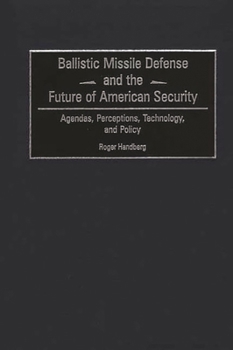Ballistic Missile Defense and the Future of American Security: Agendas, Perceptions, Technology, and Policy
Select Format
Select Condition 
Book Overview
American politicians have long been troubled by the question of whether or not to deploy a national missile defense system. The argument has focused upon the questions of cost, both political and fiscal, plus the reliability of the technologies. This study places that debate within the context of an ongoing controversy over the direction of American foreign and defense policy since the 1950s. Since that time several distinct worldviews (labeled Believers, Pragmatists, and Wilsonians) have been articulated, views which predetermine decision-makers' positions on national missile defense. Those worldviews structure how technology tests and costs are evaluated regardless of outcomes. Politics, not technological proficiency, drives policy decisions.
In effect, the debate has been a dialogue of the deaf and blind wherein each perceives only that which fits their predetermined views. This controversy raises questions regarding the use of deterrence as the basis for national policy and the role of technology in making such decisions. Handberg places this debate within the historical flow of events, dating back to the first inkling that national missile defense might be possible. The arrival of the George W. Bush administration moves national missile defense to the forefront with the question of deployment now considered a near reality.Related Subjects
Arms Control Astronomy Astronomy & Astrophysics Astronomy & Space Science Business & Finance Business & Investing Economics Engineering Finance History International & World Politics International Relations Military Military Science Military Sciences Political Science Politics & Government Politics & Social Sciences Science Science & Math Science & Scientists Science & Technology Social Sciences Strategy Technology




